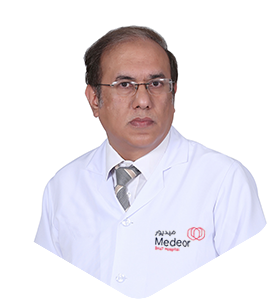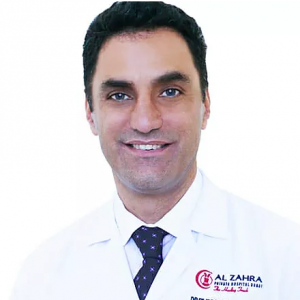Duodenoduodenostomy
Duodenoduodenostomy is an anastomosis (or a surgical connection) between two duodena to bypass an obstructed segment of the duodenum.
It is a procedure that helps in detecting duodenal obstruction created by the annular pancreas. Usually, this method is used in infants and children. It is a primary section of small intestine, nestled beyond the stomach. It’s shape resembles a horse-shoe. It is wider than ileum and jejunum. Apart from being wider it is also the shortest part of the small intestine. Its length is almost 25 cms.
The job of duodenum is to add stomach’s secreted things into the small intestine. It absorbs many essential vitamins and minerals. It balances the acidic level of the stomach because duodenum is alkaline in nature. It forms a passage known as hepatoduodenal canal, which directly connects it to the liver. Duodenum prepares enough chyme for digestion. Iron absorption maximum times takes place in duodenum.
Congenital duodenal obstruction is commonly reported among infants and children. Mostly discovered are intestinal/duodenal atresia and stenosis diagnosis involving the neonates. Also noticed is the duodenal web.
It has four categories.
- Superior
- Inferior
- Ascending
- Descending
WHAT IS DUODENAL WEB?
It is also known as the diaphragm and intraluminal diverticular, typically described as half or full obstruction of the duodenum because of the membranous web. A tiny gap is found in the middle of which separates the duodenal web and duodenal atresia.
Top Doctors For Duodenoduodenostomy Treatments
Top Hospitals For Duodenoduodenostomy Treatments
Duodenoduodenostomy
Purpose For Duodenoduodenostomy
This anastomosis is carried out due to the following surgical treatments:
- Congenital intrinsic duodenal obstruction.
- Congenital intrinsic intestinal obstruction.
- Congenital anomalies of the esophagus
- Annular pancreas.
Types Of Duodenoduodenostomy
The main types of duodenoduodenostomy include:
- Laparoscopic duodenoduodenostomy (LDD)
- Kimura’s diamond-shaped anastomosis (DSD)
- Kimura’s inverted anastomosis (i-DSD)
Eligibility For Duodenoduodenostomy
In patients with duodenal obstruction, a duodenoduodenostomy is the most commonly performed procedure for surgical repair. Such obstructions include:
- atresia,
- stenosis, and
- web.
The anastomosis also helps pediatric duodenal atresia and stenosis abnormalities that support surgical correction and the DD annular pancreas patients.
Procedure For Duodenoduodenostomy
Duodenoduodenostomy involves diagnostics laparoscopic procedure through the following steps:
- Low-risk minimally invasive small incisions inside the abdomen, in the proximal duodenum, while the distal was opened by transverse incision.
- Followed by the inverted-diamond-shaped-duodenoduodenostomy (i-DSD), oral feeding status on days 2 to 3.
- Discontinuity of peripheral intravenous fluids on drugs 3 to 8.
- On days 8 to 12, feeding on full oral feeds.
- Within 12 to 14 days, hospitalization may be completed.
No complication has been observed using the procedure of i-DSD described above, as regards leakage, dehiscence, biliary stasis, or stenosis. Patients who have i-DSD achieve full oral feeds in a very short period and consequently, the length time of hospitalization is significantly shortened.
DUODENAL ATRESIA TREATMENT
The intravenous tube is injected to minimize dehydration.
TESTS :
- Abdominal X-ray
- Normal X-ray
- Ultrasound
- Upper gastrointestinal study
- Oesophagogastroduodenoscopy
- Echocardiogram
DUODENAL ATRESIA SURGERY
- A nasogastric tube is inserted to extract the unnecessary fluid from the baby’s duodenum and stomach.
- Tube almost stops vomiting and diarrhoea.
- Then intravenous antibiotics are given to normalize the situation, though they are quite expensive but totally worth it.
- The most preferred method for surgery is laparoscopy.
- In laparoscopy tiny incisions are made on the stomach and doctor check the real problem through a microscope.
- Doctors usually detect everything in one go, to avoid happening the same in other areas.
- Once it is done, the area is sewn and closed neatly.
AFTER THE DUODENAL ATRESIA SURGERY
- For some days food will be given through the intravenous technique and for internal feeding Frederick miller feeding tube is very effective.
- When the amount of fluid decreases and normalizes, mom can start feeding baby orally.
- Tylenol and ibuprofen may be required.
- Keep in touch with the doctor after the baby’s discharge.
DUODENAL ATRESIA ASSOCIATED ANOMALIES
It is associated with a number of anomalies and most popular ones are :
- Down’s Syndrome – 30-35% cases are found
- Esophageal Atresia – 8-9%
- Malrotation – 20%
- Annular pancreas – 23-25%
- Congenital heart disease – 22-24%
CPT CODE FOR DUODENOJEJUNOSTOMY :
It is 48153 and it shares it with near-total duodenectomy, pancreatectomy, and choledochoenterostomy.
Complications After Duodenal Obstruction
Despite the high survival rate for infants undergoing surgical treatment for congenital intrinsic duodenal obstruction, long term follow-up reveals a high complication rate related to surgical therapy.
Such complications include:
- Bilious vomiting
- Intestinal bowel obstruction
- Hydramnious
- Down syndrome
- Duodenal atresia
- Annular pancreas
- Duodenal diaphragm
- Bowel transit
- Megaduodenum with blind loop syndrome
- Gastritis
- Bile reflux
- Cholestatic jaundice
- Gastroesophageal reflux
- Delayed Transit
- Breathing difficulty
Recovery Period After Duodenoduodenostomy
The maximum time of hospitalization and recovery is between 12 to 14 days.
Mortality Rate
Congenital duodenal obstruction traditionally managed by laparoscopic duodenoduodenostomy in neonates witnessed a mortality rate of 5 to 10%. In adulthood, a mortality rate of about 5% has been recorded.
Symptoms
- Redness in the body
- Abdominal swelling
- Vomiting
- Irregular bowel movements
Causes
na
FAQ
- Can normal babies have duodenal atresia?
Duodenal atresia is present in more than 1 in 5,000 live births. It occurs when recanalization does not completely happen. About one-third of infants with duodenal atresia may have Trisomy 21 (Down syndrome) as well as other congenital differences.
- How is duodenal atresia treated?
Duodenal atresia treatment requires a surgical operation to remove the blockage (atresia) and repair the duodenum. This surgery is not considered an emergency and therefore is done when the baby is 2 to 3 days old.
- What are the symptoms of esophageal atresia?
The signs and symptoms of esophageal atresia are:
-
- Coughing and choking when feeding.
- Difficulty in breathing
- Frothy white bubbles in the baby's mouth.
- The blue color of the skin, especially when the baby is feeding.
- Is duodenal atresia genetic?
Duodenal atresia is a rare congenital digestive disorder that usually occurs sporadically. Though a few cases of duodenal atresia and duodenal stenosis have been inherited as an autosomal excessive genetic trait, the cause is not very much known. Duodenal atresia is a disease of neonates.
- What is the treatment for floppy colon?
When a baby with duodenal atresia has a problem of constipation and to make colon less stiff and more floppy various strategies are used such as:
-
- By cutting the use of laxatives
- Operation
- Electrical stimulant
- What is the CPT code for duodenotomy?
It is 44010.
- How common is duodenal atresia in normal children?
Fortunately, in normal children, it is not common at all and only 1 in 5000 children is affected with duodenal atresia.
- Is there any difference between duodenal atresia and duodenal stenosis?
Yes, duodenal atresia causes complete obstruction while duodenal stenosis causes partial obstruction.
- What type of food should I eat after anastomosis therapy
We recommend eating 6 times per day, or every 2 to 3 hours. Eat foods that are easy to swallow and digest. These made include soft moist foods like soup, gelatin, pudding, and yogurt. Avoid gummy foods such as bread, tough meats, as well as spicy, fried, or gas-producing foods. Take more fluids.


























































































